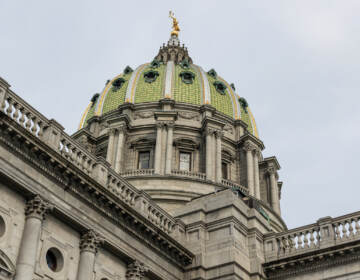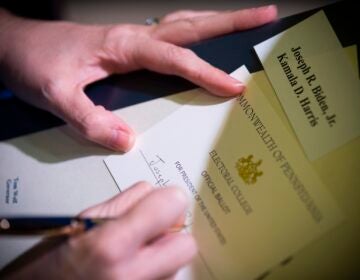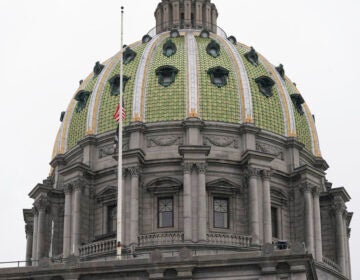Raising taxes on the table as Pa. weighs how to pay for education court ruling
Gov. Josh Shapiro is set to give his budget address, kicking off a debate over how Pennsylvania should pay for additional investments in education required by a court ruling.
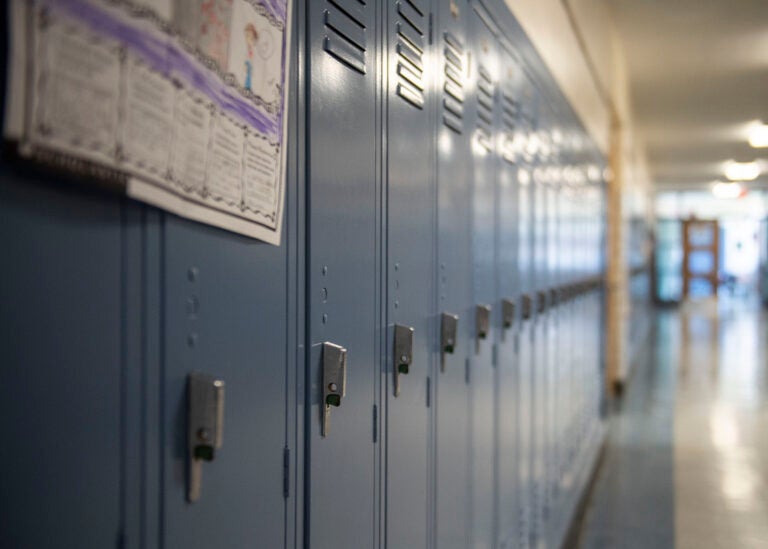
Bennetts Valley Elementary School on April 5, 2023. (Nate Smallwood / For Spotlight PA)
This story originally appeared on Spotlight PA.
Pennsylvania likely needs billions of dollars to shore up its public schools following a landmark court ruling, but lawmakers are entering a new state budget cycle with few concrete proposals.
In the coming months, the General Assembly and Democratic Gov. Josh Shapiro will debate the state’s next spending plan behind closed doors, and will ultimately be forced to put their ideas for finding revenue on the record.
Shapiro will kick off those talks on Feb. 6, when he delivers his budget address. The deadline to deliver a completed spending plan is June 30.
The answer could involve sales or income tax increases, but Republicans say those pitches must come with concessions from Democrats, like property tax relief. Increasing taxes on liquor or gambling, or legalizing marijuana are attractive options, but so-called “sin taxes” have failed to produce lasting revenue in the past.
Still, many lawmakers from both major parties agree on at least one thing: More education funding is necessary.
Nearly a year ago, a Commonwealth Court judge ruled that the system Pennsylvania uses to fund its public schools is unconstitutionally inequitable. She ordered it to be overhauled but didn’t say precisely how; that’s up to the legislature, executive branch, and educators.
Since then, the state has reconvened a bipartisan legislative commission to study the issue. After a series of statewide hearings, the panel approved a report — without support from its Republican members — that proposed pouring billions of new dollars, many of them recurring, into the state’s K-12 education system.
That includes a minimum of $5.4 billion in new money for underfunded districts and $955 million in aid to ease property tax burdens in high-tax districts, plus at least $900 million more to fund school construction and infrastructure upgrades, reimburse districts for charter school payments, and expand mental health resources, among other priorities.
Add in annual increases to keep up with inflation, and it’s a huge amount of money.
At the same time, policy analysts across the political spectrum have acknowledged that Pennsylvania’s annual expenses continually outgrow annual tax revenues.
“Without question, obviously, there is no free lunch,” said Donna Cooper, a former top aide to Democratic Gov. Ed Rendell who now leads the advocacy group Children First.
The fiscal situation
The commonwealth’s coffers are flush. As of February, the state sits on a roughly $12 billion surplus.
Half has been deposited into the state’s rainy day fund, the equivalent of a long-term savings account for the commonwealth. The other half, which accrued amid elevated federal pandemic aid and higher-than-expected tax revenues, is in the state’s general fund — the commonwealth’s main checking account used to pay for everything from salaries to grants.
Traditionally, legislative Democrats argue the state should spend the extra money on the deferred needs of communities, while their Republican counterparts favor sitting on excess dollars as insurance against recessions. The size of the state’s reserves and the potential financial obligations to meet the court order have supercharged that debate heading into budget season.
As of the end of January, the state’s tax revenues were almost exactly aligned with projections. However, the state’s Independent Fiscal Office has predicted growing deficits beginning as soon as next year.
Marc Stier, executive director of the progressive Pennsylvania Policy Center, estimated the commonwealth will use up its reserves by 2028 at its current spending rate.
But state spending already has and likely will continue to increase.
Lawmakers tapped the surplus in last year’s budget, Shapiro’s first. Spending then increased by more than $4 billion, including a $567 million boost to K-12 education, $175 million put into school building repairs and construction, and $10 million committed to student-teacher stipends, among other programs.
Shapiro has proposed spending more on transit and higher education in 2024. The commission’s report also suggested a downpayment of $871 million into K-12 education in the coming fiscal year. That alone adds up to over $1 billion in new spending.
To maintain this spending and avoid running bigger and bigger deficits, the state will likely have to increase taxes within the next few years, Stier said.
Republicans have said the same.
In a recent statement, state Rep. Seth Grove (R., York), minority chair of the chamber’s Appropriations Committee, said the commission’s proposed education spending would require a 1.5 percentage point increase in the state’s income tax rate, which is currently at 3.07% for all earners, regardless of how much money they make or how they make it. That, he said, “isn’t based in reality.”
The Republicans who control the state Senate also oppose any broad tax increase.
State Sen. Scott Martin (R., Lancaster), who chairs the upper chamber’s Appropriations Committee, told Spotlight PA he thinks “raising taxes on struggling Pennsylvanians during an inflationary time would absolutely be devastating and harmful to our already struggling economy.”
Chair of the state Senate Education Committee, David Argall (R., Schuylkill), said he could foresee only one circumstance in which his caucus agrees to a tax hike: If the legislature also agrees on a way to reduce Pennsylvania’s property taxes — a long-held dream of many Republicans.
“If [Shapiro] comes in and tries to increase income and sales taxes for education without decreasing property taxes, there’s going to be a lot of opposition,” Argall said.
Lawmakers have tried to up revenue with more limited taxes in the past. Rendell, working as governor with a GOP-controlled legislature, brought gambling to the commonwealth in the 2000s under the promise of eliminating school property taxes, but the promised revenue didn’t materialize.
Some Republicans have also argued that school choice strategies, such as using tax dollars to fund private school tuition for some students, would be a cheaper way to improve education equity. State House Democrats are broadly against this, but Shapiro is open to the approach.
Nathan Benefield, who heads the conservative Commonwealth Foundation, told Spotlight PA he thinks that along with cutting funding to shrinking districts and recouping districts’ “excessive” financial reserves, the state should focus on “expanding educational opportunities for low-income families.”
“A child has little opportunity if the only option afforded to them is a perpetually failing school assigned based on address,” he said.
Vouchers would be politically risky, particularly for Democrats allied with the state’s influential teachers unions. However, given the other options facing lawmakers, state Sen. Anthony Williams (D., Philadelphia) said it shouldn’t be taken off the table.
“We’ve increased taxes, given our self pay raises, and people voted for us,” Williams told Spotlight PA. “You’re not going to lose an election on this issue. You lose it if you don’t do the work.”
Democrats have so far avoided calling for a tax increase.
Asked about where to find the dollars to meet the potential new fiscal commitment, state Rep. Peter Schweyer (D., Lehigh), chair of the House Education Committee, told reporters in January that “those [conversations] will happen during budget negotiations.”
A spokesperson for Shapiro said that the governor “knows hardworking families across our Commonwealth can’t afford a tax increase.”
“The Governor will propose a balanced budget that cuts taxes, maintains a balance in the rainy day fund, and expands on critically important investments in our students and families,” Shapiro press secretary Manuel Bonder said in a statement.
Pennsylvania’s uniformity problem
Complicating any tax increase discussion is a provision in the Pennsylvania Constitution known as the “uniformity clause,” which prevents lawmakers from levying higher taxes solely on higher earners.
Polling done by PA School Works last year found that the most popular option to pay for increased education funding with likely voters statewide was raising taxes on the rich, Cooper said. However, if enacted, such a proposal would likely be found unconstitutional.
Policymakers tried it once before.
In the 1930s, the governor and legislature attempted to tax the rich at a higher rate than the poor to reduce property taxes while boosting education funding. The state Supreme Court ruled the law unconstitutional, saying it violated a provision that taxes be uniform “upon the same class of subjects.”
As a result, Pennsylvania has the 4th most regressive tax structure in the nation, according to a recent report by the Institute on Taxation and Economic Policy, a Washington, D.C.-based think tank.
Pennsylvanians pay an average of $6,259 each year in state and local taxes. This disproportionately impacts the bottom 20% of households — or those making less than $22,100 a year — who pay 15.1% of their household income in taxes, according to the ITEP. That’s the highest burden placed on the bottom quartile of earners in the country.
Meanwhile, the top 1% of earners in Pennsylvania — or those who make more than $746,300 — hand over 6% of their annual income to state and local governments in taxes.
There could be a workaround to the uniformity clause.
Stier of the Pennsylvania Policy Center proposed a plan that would tax high earners without a need for a constitutional amendment, which would take at minimum two years to implement.
Right now, the state’s income tax is leveled on eight different money streams that are all classified as income, including wages; salaries; business and rental income; capital gains; and income from estates or trusts.
Stier’s proposal would replace this flat tax with two separate rates — one lower rate only on wages and salaries, and a higher rate on passive income, which he dubbed a wealth tax. Such a plan, Stier argued, would mirror how many localities such as Philadelphia collect taxes, and would pass legal muster if challenged in court.
But to reach the bench, the plan would first have to make it onto Shapiro’s desk. And despite his pitches, Stier’s yet to receive any commitments.
“I’m afraid to say my persuasive powers have so far not overcome the general reluctance of Pennsylvania’s politicians to talk about taxes,” he said.
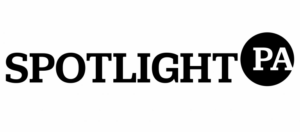 Spotlight PA is an independent, nonpartisan, and nonprofit newsroom producing investigative and public-service journalism that holds the powerful to account and drives positive change in Pennsylvania.
Spotlight PA is an independent, nonpartisan, and nonprofit newsroom producing investigative and public-service journalism that holds the powerful to account and drives positive change in Pennsylvania.

Get daily updates from WHYY News!
WHYY is your source for fact-based, in-depth journalism and information. As a nonprofit organization, we rely on financial support from readers like you. Please give today.


